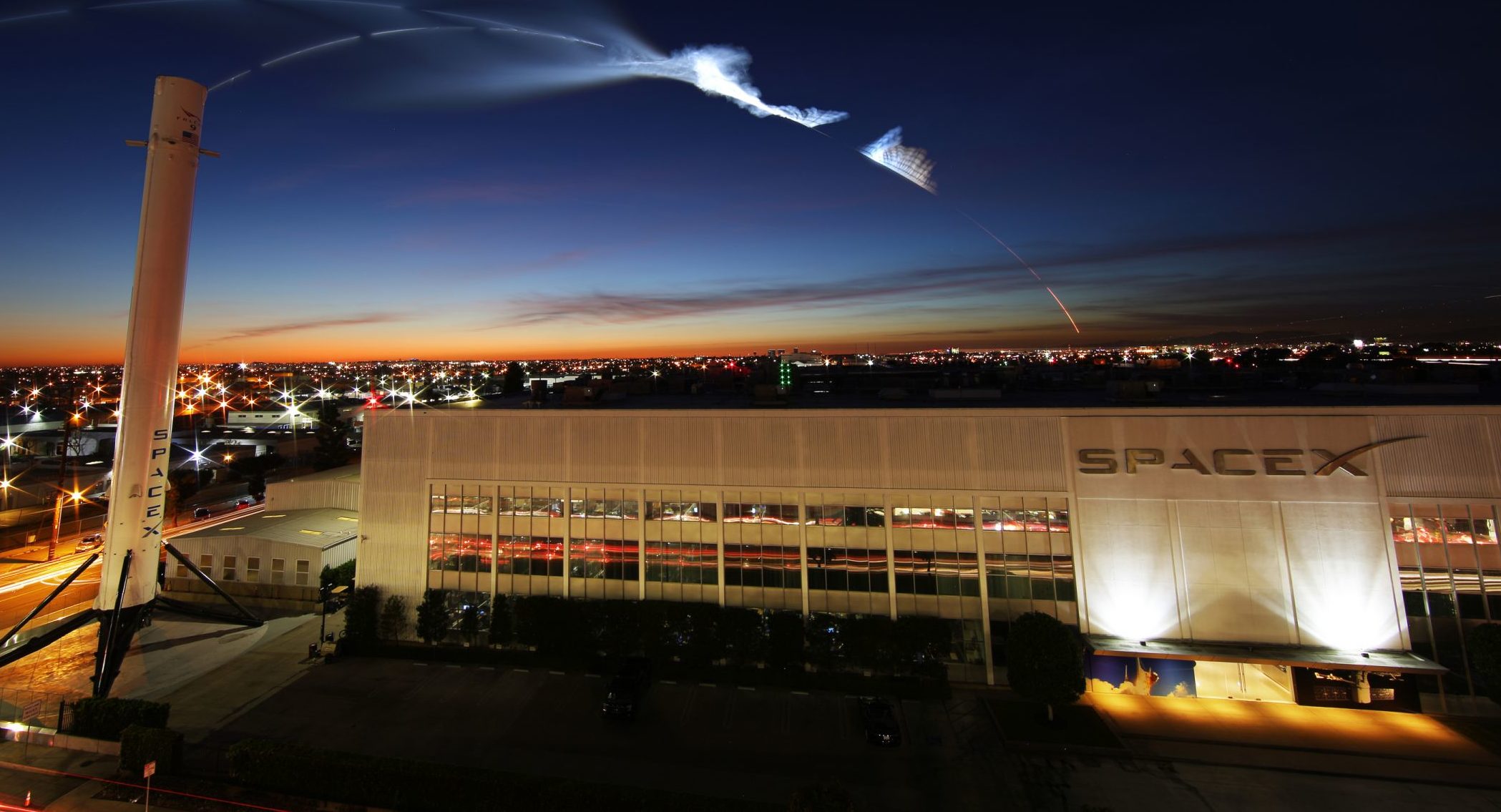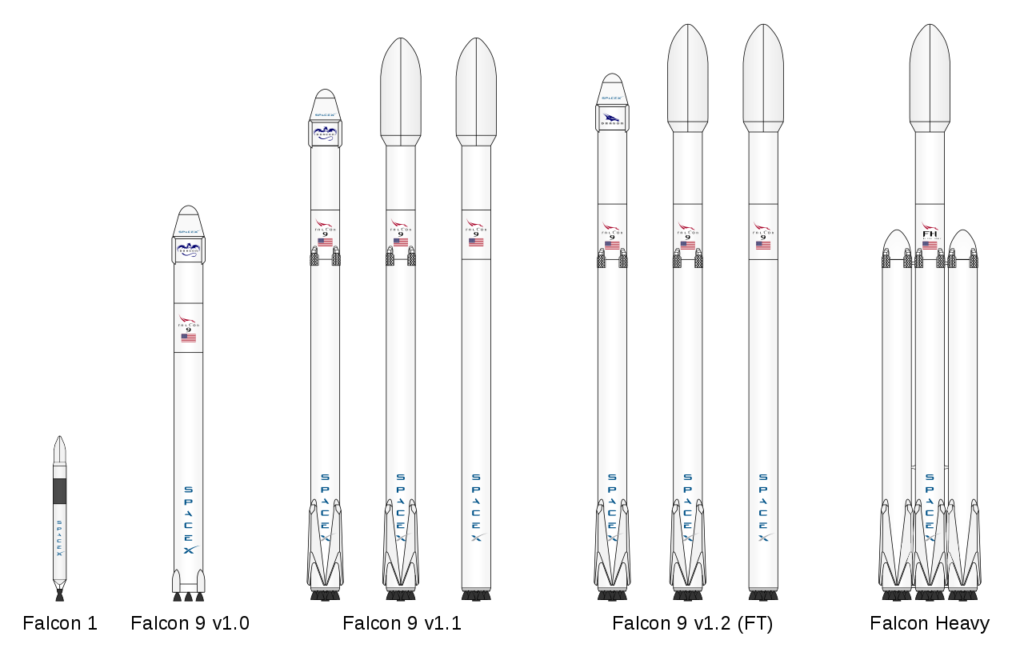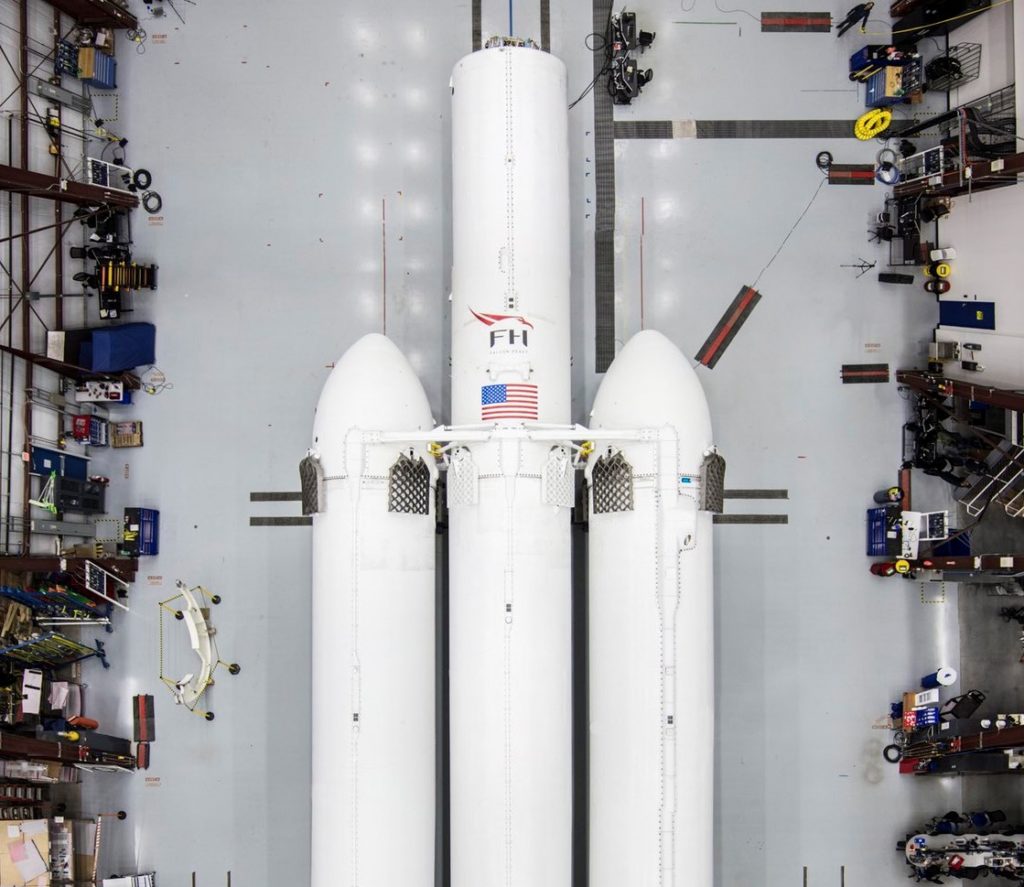

News
SpaceX may perfect reusable rockets in 2018: Evolution in the Falcons’ Nest
2017 has in almost every respect been an unrivaled halcyon year for SpaceX: over the course of its twelves months, SpaceX has returned to flight, begun reusing Falcon 9 boosters, and overall completed 18/18 successful launches and 15/15 first stage recoveries – five of which were commercial reuses of ‘flight-proven’ boosters. It is difficult to fathom how the year could have been more successful, aside from a slight hiccup with fairing manufacturing that may have prevented the launch company from racking up 20 or more missions in 2017.
And yet, despite the flooring and incontrovertible triumphs, I can state with confidence that, barring any serious anomalies, SpaceX’s 2018 docket will utterly eclipse 2017’s varied achievements. This series of articles will act as a sort of preview of SpaceX’s imminent future in 2018, each looking at what the new year may hold for the company’s three most fundamental pursuits: the Falcon rocket family, the Starlink satellite internet initiative, and its ambitions of interplanetary colonization.

Sooty Falcon 9 1035 before its second flight with an also-reused Dragon payload, CRS-13. (Tom Cross/Teslarati)
Falcon finds its wings
While 2015 and 2016 both saw their own hints of potential successes to come, 2017 is the first year that SpaceX managed a truly impressive launch cadence for Falcon 9 without a serious vehicle failure. Every 2017 launch flew on either a Block 3 or Block 4 iteration of Falcon 9 1.2. Esoteric model numbers aside, this simply means that Falcon 9’s design, manufacture, and operation are all maturing rapidly; SpaceX has clearly learned from the CRS-7 and Amos-6 failures and responded accordingly with a more cautious and tempered perspective.
From a historical perspective, it is extraordinarily impressive that Falcon 9 and Cargo Dragon have experienced such a tiny number of failures over their short but active existences. Both Falcon 9 and Dragon have experienced several miscellaneous teething issues and technical difficulties over their ~7 years of launches, but only three anomalies resulted in failures that catastrophically impacted customer payloads: CRS-1, CRS-7, and Amos-6. Thus, out of a total of 46 Falcon 9 launches, approximately 94% have been complete successes. For perspective SpaceX’s first orbital rocket, Falcon 1, experienced total failures during its first three launch attempts, for a success rate of 40%.

SpaceX’s Falcon family of rockets. (Wikipedia)
Barring further flight hardware anomalies in the Falcon family, however, 2018 is likely to be even more of a boon for Falcon 9 (and Falcon Heavy). While Falcon Heavy is set to ring in the new year sometime in January 2018, just a few weeks away, far more significant for SpaceX’s launch business is the debut of the “final” iteration of Falcon 9, dubbed Block 5 or ‘V5,’ likely within the next several months. Block 5 has been heavily modified almost entirely for the sake of more efficient reuse, and will feature titanium grid fins (most recently spotted on Falcon Heavy) and several other changes. Altogether, SpaceX’s public goal is to be able to reuse Falcon 9 Block 5 as many as a dozen times with relative ease, and each booster’s lifespan could potentially be lengthened by a factor of 5-10 with more extensive periodic maintenance.
For now, we only use those on super hot reentry missions. Will go to all Ti with Falcon 9 V5, which is a few months away.
— Elon Musk (@elonmusk) December 17, 2017
This ‘final’ version of Falcon 9 will almost undoubtedly go through its own period of tweaks, changes, and iterative improvements once it debuts and begins to gather flight experience. Nevertheless, it’s plausible that once its minor problems are ironed out, SpaceX will choose to “freeze” the design and begin to aggressively transfer large sections of its engineering and manufacturing base over to the company’s Mars rocket, BFR. Ultimately, the highly reusable Block 5 evolution of Falcon 9 will allow SpaceX to transfer over its customers to reused rockets and thus recoup the cost of reusability R&D far faster than ever before, both by lowering the material cost of launch and enabling a considerably higher frequency of launches.

This crop of Falcon Heavy shows off its side cores, both sporting titanium grid fins that are considerably larger than the original aluminum fins. (SpaceX)
Taken as a whole, the culmination of the Falcon family’s evolution will pave SpaceX’s path to realizing its even wilder ambitions of providing ubiquitous and superior satellite internet and transforming itself into the backbone of crew and cargo transport to the Moon, Mars, and beyond. But that’s a story for another day…
While we wish we could jump forward to the end of 2018 and reflect upon even more incredible SpaceX achievements, you can follow SpaceX’s day by day progress live with our launch photographer Tom Cross on Twitter and Instagram @Teslarati. Significant upcoming events include the ever-secretive launch of Zuma (7:57pm EST, January 4) and the inaugural static fire and launch of the titanic Falcon Heavy (no earlier than Jan. 6 and Jan. 15).
Elon Musk
Tesla reveals it is using AI to make factories more sustainable: here’s how
Tesla is using AI in its Gigafactory Nevada factory to improve HVAC efficiency.

Tesla has revealed in its Extended Impact Report for 2024 that it is using Artificial Intelligence (AI) to enable its factories to be more sustainable. One example it used was its achievement of managing “the majority of the HVAC infrastructure at Gigafactory Nevada is now AI-controlled” last year.
In a commitment to becoming more efficient and making its production as eco-friendly as possible, Tesla has been working for years to find solutions to reduce energy consumption in its factories.
For example, in 2023, Tesla implemented optimization controls in the plastics and paint shops located at Gigafactory Texas, which increased the efficiency of natural gas consumption. Tesla plans to phase out natural gas use across its factories eventually, but for now, it prioritizes work to reduce emissions from that energy source specifically.
It also uses Hygrometric Control Logic for Air Handling Units at Giafactory Berlin, resulting in 17,000 MWh in energy savings each year. At Gigafactory Nevada, Tesla saves 9.5 GWh of energy through the use of N-Methylpyrrolidone refineries when extracting critical raw material.
Perhaps the most interesting way Tesla is conserving energy is through the use of AI at Gigafactory Nevada, as it describes its use of AI to reduce energy demand:
“In 2023, AI Control for HVAC was expanded from Nevada and Texas to now include our Berlin-Brandenburg and Fremont factories. AI Control policy enables HVAC systems within each factory to work together to process sensor data, model factory dynamics, and apply control actions that safely minimize the energy required to support production. In 2024, this system achieved two milestones: the majority of HVAC infrastructure at Gigafactory Nevada is now AI-controlled, reducing fan and thermal energy demand; and the AI algorithm was extended to manage entire chiller plants, creating a closed-loop control system that optimizes both chilled water consumption and the energy required for its generation, all while maintaining factory conditions.”
Tesla utilizes AI Control “primarily on systems that heat or cool critical factory production spaces and equipment.” AI Control communicates with the preexisting standard control logic of each system, and any issues can be resolved by quickly reverting back to standard control. There were none in 2024.
Tesla says that it is utilizing AI to drive impact at its factories, and it has proven to be a valuable tool in reducing energy consumption at one of its facilities.
Elon Musk
Tesla analysts believe Musk and Trump feud will pass
Tesla CEO Elon Musk and U.S. President Donald Trump’s feud shall pass, several bulls say.

Tesla analysts are breaking down the current feud between CEO Elon Musk and U.S. President Donald Trump, as the two continue to disagree on the “Big Beautiful Bill” and its impact on the country’s national debt.
Musk, who headed the Department of Government Efficiency (DOGE) under the Trump Administration, left his post in May. Soon thereafter, he and President Trump entered a very public and verbal disagreement, where things turned sour. They reconciled to an extent, and things seemed to be in the past.
However, the second disagreement between the two started on Monday, as Musk continued to push back on the “Big Beautiful Bill” that the Trump administration is attempting to sign into law. It would, by Musk’s estimation, increase spending and reverse the work DOGE did to trim the deficit.
Every member of Congress who campaigned on reducing government spending and then immediately voted for the biggest debt increase in history should hang their head in shame!
And they will lose their primary next year if it is the last thing I do on this Earth.
— Elon Musk (@elonmusk) June 30, 2025
President Trump has hinted that DOGE could be “the monster” that “eats Elon,” threatening to end the subsidies that SpaceX and Tesla receive. Musk has not been opposed to ending government subsidies for companies, including his own, as long as they are all abolished.
How Tesla could benefit from the ‘Big Beautiful Bill’ that axes EV subsidies
Despite this contentious back-and-forth between the two, analysts are sharing their opinions now, and a few of the more bullish Tesla observers are convinced that this feud will pass, Trump and Musk will resolve their differences as they have before, and things will return to normal.
ARK Invest’s Cathie Wood said this morning that the feud between Musk and Trump is another example of “this too shall pass:”
BREAKING: CATHIE WOOD SAYS — ELON AND TRUMP FEUD “WILL PASS” 👀 $TSLA
She remains bullish ! pic.twitter.com/w5rW2gfCkx
— TheSonOfWalkley (@TheSonOfWalkley) July 1, 2025
Additionally, Wedbush’s Dan Ives, in a note to investors this morning, said that the situation “will settle:”
“We believe this situation will settle and at the end of the day Musk needs Trump and Trump needs Musk given the AI Arms Race going on between the US and China. The jabs between Musk and Trump will continue as the Budget rolls through Congress but Tesla investors want Musk to focus on driving Tesla and stop this political angle…which has turned into a life of its own in a roller coaster ride since the November elections.”
Tesla shares are down about 5 percent at 3:10 p.m. on the East Coast.
Elon Musk
Tesla scrambles after Musk sidekick exit, CEO takes over sales
Tesla CEO Elon Musk is reportedly overseeing sales in North America and Europe, Bloomberg reports.

Tesla scrambled its executives around following the exit of CEO Elon Musk’s sidekick last week, Omead Afshar. Afshar was relieved of his duties as Head of Sales for both North America and Europe.
Bloomberg is reporting that Musk is now overseeing both regions for sales, according to sources familiar with the matter. Afshar left the company last week, likely due to slow sales in both markets, ending a seven-year term with the electric automaker.
Tesla’s Omead Afshar, known as Elon Musk’s right-hand man, leaves company: reports
Afshar was promoted to the role late last year as Musk was becoming more involved in the road to the White House with President Donald Trump.
Afshar, whose LinkedIn account stated he was working within the “Office of the CEO,” was known as Musk’s right-hand man for years.
Additionally, Tom Zhu, currently the Senior Vice President of Automotive at Tesla, will oversee sales in Asia, according to the report.
It is a scramble by Tesla to get the company’s proven executives over the pain points the automaker has found halfway through the year. Sales are looking to be close to the 1.8 million vehicles the company delivered in both of the past two years.
Tesla is pivoting to pay more attention to the struggling automotive sales that it has felt over the past six months. Although it is still performing well and is the best-selling EV maker by a long way, it is struggling to find growth despite redesigning its vehicles and launching new tech and improvements within them.
The company is also looking to focus more on its deployment of autonomous tech, especially as it recently launched its Robotaxi platform in Austin just over a week ago.
However, while this is the long-term catalyst for Tesla, sales still need some work, and it appears the company’s strategy is to put its biggest guns on its biggest problems.
-

 Elon Musk1 day ago
Elon Musk1 day agoTesla investors will be shocked by Jim Cramer’s latest assessment
-

 News6 days ago
News6 days agoTesla Robotaxi’s biggest challenge seems to be this one thing
-

 News2 weeks ago
News2 weeks agoTesla’s Grok integration will be more realistic with this cool feature
-

 Elon Musk2 weeks ago
Elon Musk2 weeks agoElon Musk slams Bloomberg’s shocking xAI cash burn claims
-

 News2 weeks ago
News2 weeks agoTesla China roars back with highest vehicle registrations this Q2 so far
-

 News2 weeks ago
News2 weeks agoTexas lawmakers urge Tesla to delay Austin robotaxi launch to September
-

 News2 weeks ago
News2 weeks agoTesla dominates Cars.com’s Made in America Index with clean sweep
-

 Elon Musk1 week ago
Elon Musk1 week agoFirst Look at Tesla’s Robotaxi App: features, design, and more














